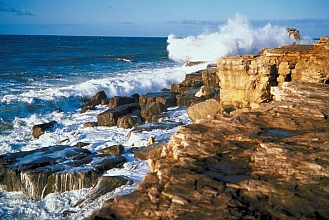The Picturing to Learn project helps undergraduate students learn science by illustrating the science to high schoolers.
Click on image for full size
Courtesy of Kara Culligan and Eunji Chung, Harvard University; Lina Garcia, Massachusetts Institute of Technology
Picture This: Explaining Science Through Drawings
News story originally written on April 28, 2008
Could you explain science with a drawing? That's what a group of college students has been doing.
They are not just doodling in their notebooks. Their drawings are part of Picturing to Learn, a project funded by the National Science Foundation. And their artwork is helping high school students learn about science.
The students making pictures are taking physics, biology, and chemistry classes at their colleges. To draw the pictures they have to understand the science. Many of their drawings bring scientific concepts to life in interesting new ways – even with cartoons and stick figures. Workshops are also getting science and art students working together to take their pictures that explain science to the next level.
Last modified April 28, 2008 by Lisa Gardiner.
You might also be interested in:

Scientists have learned that Mount Hood, Oregon's tallest mountain, has erupted in the past due to the mixing of two different types of magma. Adam Kent, a geologist at Oregon State University, says this
...more
The Earth's mantle is a rocky, solid shell that is between the Earth's crust and the outer core. The mantle is made up of many different reservoirs that have different chemical compositions. Scientists
...more
Some faults look strong and like they wouldn’t cause an earthquake. But it turns out that they can slip and slide like weak faults causing earthquakes. Scientists have been looking at one of these faults
...more
The sun goes through cycles that last approximately 11 years. These solar cycle include phases with more magnetic activity, sunspots, and solar flares. They also include phases with less activity. The
...more
Studying tree rings doesn't only tell us the age of that tree. Tree rings also show what climate was like while the tree was alive. This means that tree rings can tell us about climates of the past. Two
...more
Earth's first life form may have developed between the layers of a chunk of mica sitting like a multilayered sandwich in primordial waters, according to a new hypothesis. The mica hypothesis, which was
...more
Acid rain is what happens when some types of air pollution is washed out of the sky by rain. Power plants, factories, farms, houses, and cars all put pollution into the atmosphere. Sometimes, this pollution
...more















